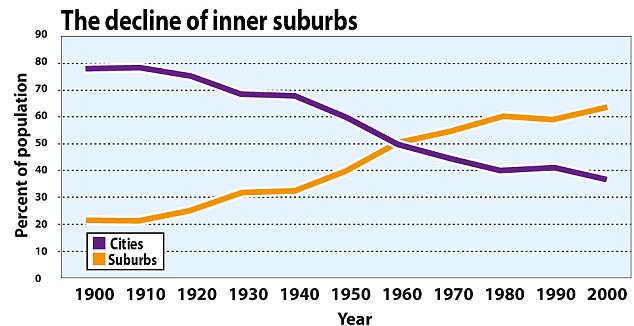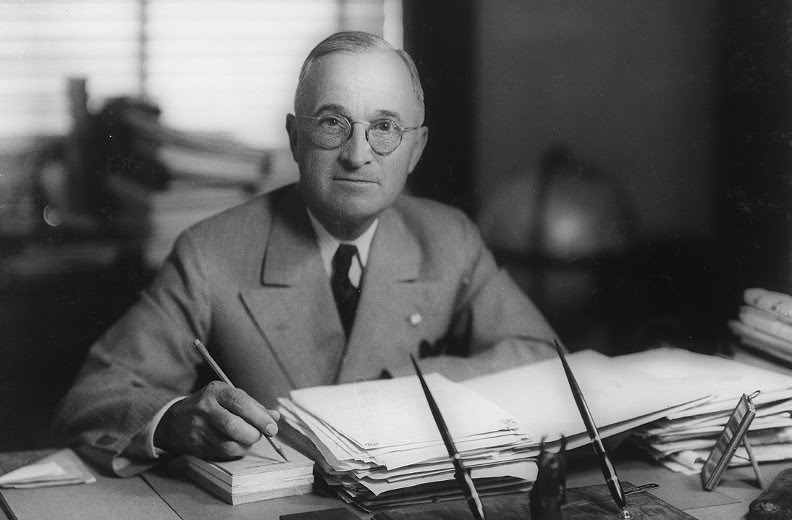You have 3 free guides left 😟
Unlock your guides8.4 Economy after 1945
6 min read•june 18, 2024
Robby May
Dalia Savy
Robby May
Dalia Savy
The U.S. economy after 1945 was characterized by unprecedented growth and prosperity. Following the end of World War II, the country experienced a period of economic expansion that lasted for several decades. This period, known as the "," was characterized by low unemployment, low inflation, and steady economic growth. The economy was also marked by significant changes in its structure, including a shift from an industrial to a service-based economy and the rise of new technologies and industries.
G.I. Bill
The , also known as the Servicemen's Readjustment Act of 1944, is a federal law that provides educational and housing benefits to veterans of the U.S. Armed Forces. It was a powerful support as 15 million veterans were transitioning to a peacetime economy.
More than half the returning GIs seized the opportunity afforded by the GI Bill to continue their education at government expense. Over two million veterans attended college under this bill. The veterans also received over $16 billion in low-interest, government-backed loans to buy homes and farms and to start businesses.
Baby Boom
One sign of the basic confidence of the postwar era was an explosion in marriages and births. During this time, the number of births per year in the U.S. increased dramatically, with an average of 4 million births per year.

The was caused by a number of factors, including the return of soldiers from World War II, the availability of affordable housing, and the prosperity of the post-war economy. Additionally, the introduction of new technologies such as the washing machine and the refrigerator made it easier for families to take care of children.
This had a significant impact on the country's economy, as the large number of children born during the Baby Boom helped to drive consumer spending and economic growth. Additionally, the Baby Boom generation would later become the backbone of the workforce and the driving force behind the economy during the 1960s, 1970s, and 1980s.
The 50 million babies that entered the U.S. population between 1945 and 1960 became known as the baby boomers generation due to their rapid growth and size.
Suburban Growth
The high demand for housing after the war, as well as the baby boom, resulted in a construction boom. Many people moved from urban areas to the suburbs in search of new homes and a better way of life.
The post-World War II economic boom and the availability of government-backed mortgages, such as the Federal Housing Administration and , allowed many Americans to purchase their own homes. The construction of the Federal Highway System also made it easier for people to commute to work and access suburban areas.
led the development of postwar suburbia with his building and promotion of , a project of 17,000 mass-produced, low-priced family homes on Long Island, New York.

The secret to the Levittown appeal was the basic home. It had a kitchen, bedrooms, a bath, a living room with a fireplace, and an expansion attic with room for two more bedrooms. The home came with a refrigerator, cooking range, and washing machine. He built only 1 interior, but there were 4 different facades to break the monotony. The original house sold for $6,990 in 1948.
The was therefore driven by the desire for this style of home with large yards and a sense of community. Many of the new suburban communities were built in response to this demand and were often designed to be self-contained, with shopping centers, schools, and other amenities located within the community.
In a single generation, a majority of Americans became suburbanites. For many older inner cities, the effect of the mass movement to suburbia was disastrous. Cities like Boston to Los Angeles became increasingly poor and racially divided.

Sunbelt States
A warmer climate, lower taxes, and economic opportunities in defense-related industries attracted many GIs and their families to the Sunbelt states from Florida to California. By transferring tax dollars from the Northeast and Midwest to the South and West, military spending during the Cold War helped finance the shift of industry, people, and ultimately political power from one region to another.
Taft-Hartley Act
The , also known as the Labor-Management Relations Act of 1947, is a federal law that amended the of 1935. The NLRA, also known as the , had established the rights of workers to form and join labor unions, engage in collective bargaining, and take part in strikes and other forms of protected concerted activity. The Taft-Hartley Act was passed in 1947 by a Republican-controlled Congress over President Harry Truman's veto.
The purpose of the Taft-Hartley Act was to check the growing power of unions. Provisions included:
- Outlawing the closed shop (contract requiring workers to join a union before being hired)
- Permitting states to pass “right to work” laws outlawing the union shop (contract requiring workers to join a union after being hired)
- Outlawing secondary boycotts (the practice of several unions supporting a striking union by joining a boycott of the company’s products) and featherbedding (the practice of requiring employers to hire more workers than actually needed)
- Giving the president the power to invoke an 80-day cooling-off period before a strike endangering national safety could be called. The Taft-Hartley Act was seen as a blow to organized labor and many of its provisions have been heavily criticized by labor unions. The act is still in effect, and its impact on labor relations and the balance of power between employers and employees continue to be debated. Unions fought for years to repeal the act.
Truman’s Fair Deal
The Fair Deal was a set of proposals put forth by President Truman as a legislative agenda for Congress to continue Franklin D. Roosevelt's New Deal policies. The Fair Deal was intended to address issues of economic inequality and social justice.

The Fair Deal proposals included:
-
An expansion of
-
A
-
A federal program to provide low-cost housing
-
An increase in the minimum wage
-
A Civil Rights program that would end discrimination in housing, education, and employment
-
A federal program to provide jobs and training for unemployed
-
A program to improve rural life and increase farm income It received support from labor unions, civil rights groups, and other progressive organizations, but it was opposed by conservative groups, who argued that it would lead to bigger government and higher taxes. Since Congress was controlled by Republicans, they were able to defeat most of the Fair Deal bills for two reasons:
-
Truman’s political conflicts with Congress
-
The pressing foreign policy concerns of the Cold War. Despite the limited success of the Fair Deal, some of its proposals were later passed into law by Truman's successors, such as the expansion of social security and the creation of the Department of Health, Education, and Welfare. The Fair Deal also served as an inspiration for future progressive programs such as the Great Society of President Lyndon B. Johnson.
Eisenhower's Presidency
Modern Republicanism
Eisenhower was a fiscal conservative, whose first priority was balancing the budget after years of deficit spending. A moderate, he accepted most of the New Deal programs as a reality of modern life and even extended some of them. In this system, which he called , he did the following:
- During Eisenhower’s two terms in office, Social Security was extended to 10 million more citizens, the minimum wage was raised, and additional public housing was built.
- In 1953, he consolidated welfare programs by creating the Department of Health, Education, and Welfare.
- He opposed the ideas of federal health care insurance and federal aid to education.
Interstate Highway System
The most permanent legacy of the Eisenhower years was the passage of the Highway Act in 1956, which authorized the construction of 42,000 miles of interstate highways linking all the nation’s major cities. When completed, the system became a model for the rest of the world. This justification for new taxes on fuel, tires, and vehicles was to improve national defense. This immense public works project created jobs, promoted the trucking industry, accelerated the growth of the suburbs, and contributed to a more homogenous national culture.
Kennedy’s New Frontier
In a program called the New Frontier, John F. Kennedy called for:
- aid to education
- federal support of health care,
- civil rights Basically, these were the continued Democratic goals of FDR and Truman, which they were not able to accomplish. Unfortunately, Kennedy wouldn’t have any success either.
© 2024 Fiveable Inc. All rights reserved.
AP® and SAT® are trademarks registered by the College Board, which is not affiliated with, and does not endorse this website.
